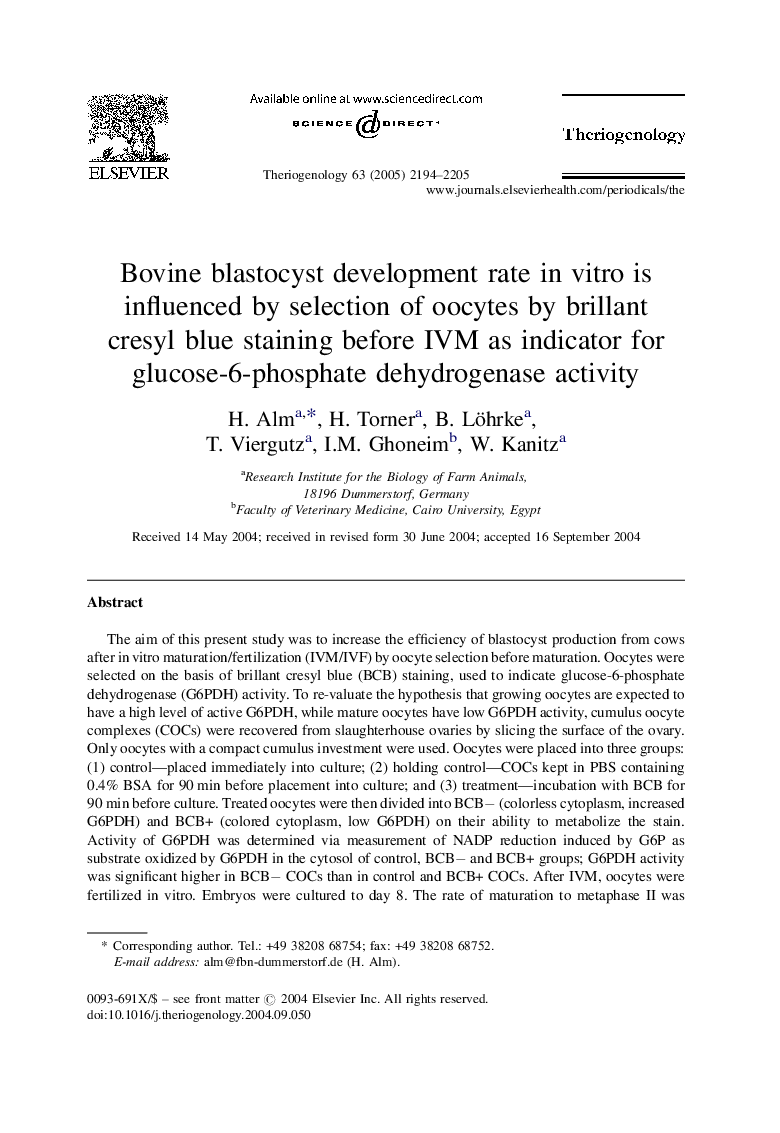| Article ID | Journal | Published Year | Pages | File Type |
|---|---|---|---|---|
| 2096995 | Theriogenology | 2005 | 12 Pages |
The aim of this present study was to increase the efficiency of blastocyst production from cows after in vitro maturation/fertilization (IVM/IVF) by oocyte selection before maturation. Oocytes were selected on the basis of brillant cresyl blue (BCB) staining, used to indicate glucose-6-phosphate dehydrogenase (G6PDH) activity. To re-valuate the hypothesis that growing oocytes are expected to have a high level of active G6PDH, while mature oocytes have low G6PDH activity, cumulus oocyte complexes (COCs) were recovered from slaughterhouse ovaries by slicing the surface of the ovary. Only oocytes with a compact cumulus investment were used. Oocytes were placed into three groups: (1) control—placed immediately into culture; (2) holding control—COCs kept in PBS containing 0.4% BSA for 90 min before placement into culture; and (3) treatment—incubation with BCB for 90 min before culture. Treated oocytes were then divided into BCB− (colorless cytoplasm, increased G6PDH) and BCB+ (colored cytoplasm, low G6PDH) on their ability to metabolize the stain. Activity of G6PDH was determined via measurement of NADP reduction induced by G6P as substrate oxidized by G6PDH in the cytosol of control, BCB− and BCB+ groups; G6PDH activity was significant higher in BCB− COCs than in control and BCB+ COCs. After IVM, oocytes were fertilized in vitro. Embryos were cultured to day 8. The rate of maturation to metaphase II was significantly higher for control and BCB+ oocytes than for BCB− oocytes. The BCB+ oocytes yielded a significantly higher proportion of blastocysts (34.1%) than did control or holding control oocytes (18.3 and 19.2%); and both controls and BCB+ oocytes had significantly higher blastocyst development than did BCB− oocytes (3.9%).These results show that the staining of bovine cumulus oocyte complexes with BCB before in vitro maturation may be used to select developmentally competent oocytes for IVF. In addition, G6PDH activity may be useful as a marker for oocyte quality in future studies on factors affecting developmental competence.
